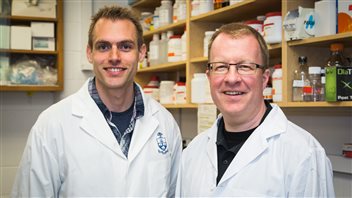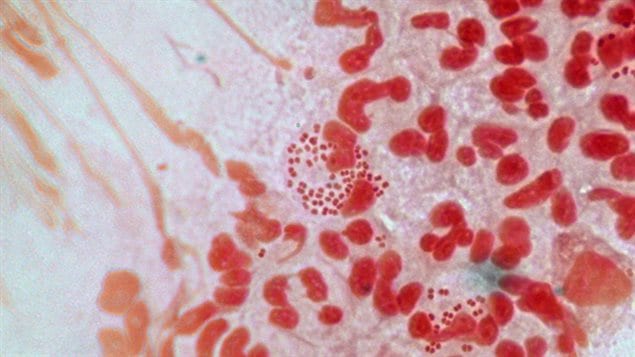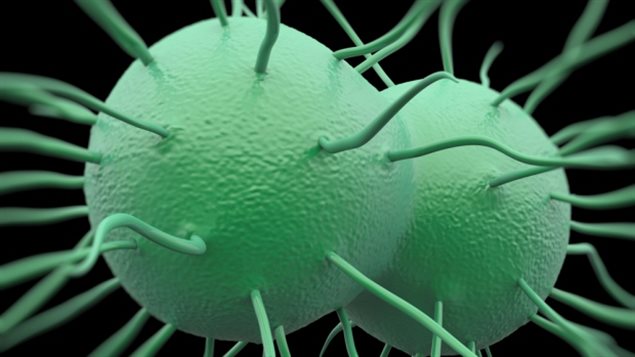Researchers in Canada have made a very important discovery regarding bacterial infections that could lead to new therapies.
This could involve enabling the body’s own immune system to fight pathogenic microbes that are currently difficult to treat.
University of Toronto scientists were investigating gonorrhea when they made the breakthrough. Scott Gray-Owen (PhD) supervised the effort. He is professor in the Department of Molecular Genetics at the University of Toronto, and also the director at the Toronto Combined Biosafety Level 3 Laboratories.
Listen
Originally the research was to figure out why people infected with gonorrhea were more susceptible to HIV infection and vice versa, and how an immune response to gonorrhea helped spread HIV through the body.
They discovered something much beyond that however.
The research was published in the journal Science this month.
Gonorrhea is part of an entire class of bacteria, “Gram-negative”, which includes bacteria which causes meningitis, diarrhea, pneumonia, and others.
What they found is that a sugar secretion from the bacteria which is called “heptose” can trigger an immune reaction from the body.
Such triggers are called pathogen-associated molecular patterns — or PAMPs — and they act like flares to alert the immune system of a harmful presence.
Normally gonorrhea is a stealthy type of bacteria that can avoid detection for long periods but if the bacteria releases heptose (which is not produced by humans) this is detected by the body as something completely alien, and is seen as a clear signal of infection. This “flare” can result in a high-gear emergency response by the body’s immune system such that not only is the infection attacked, but the fallout can damage surrounding tissues such that it can result in other serious serious and lasting side effects on the body, (or foetus if a woman is pregnant)

In terms of HIV, once someone is infected, the infection can often lie dormant in T-cells which are part of the body’s immune system. When a gonorrhea infection is detected, such as through the heptose trigger, the T-cells are activated which in turn produces more HIV so that the infection can spread throughout the body.
This gives new understanding of how heptose or other so-called PAMPS can trigger immune responses. With heptose isolated from Gram negatives, a new therapy could potentially be used to fight all bacterial, viral and other parasitic infections.
Lead author Ryan Gaudet says, “There are a range of applications where we can use PAMPs to direct a productive immune response instead of using traditional drugs, ranging from treatments for infectious disease to autoimmune disease and cancer.”

Gray-Owen says this is an exciting example of how basic science research can lead to an unexpected discovery.
The University of Toronto research team plans to continue further examination into the process of bacterial initiation of immune responses and further expand on this discovery.







For reasons beyond our control, and for an undetermined period of time, our comment section is now closed. However, our social networks remain open to your contributions.